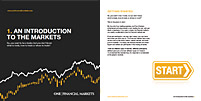

Oil prices jump over 1% on massive U.S. inventory drawdown
Investing.com -- Oil prices rose in Asian trade on Wednesday, sticking to over three-month highs as industry data pointed to a substantially larger-than-expected drawdown in U.S. inventories over the past week.
While further gains in prices were somewhat held back by a strong dollar, the inventory data pointed to a further tightening in global supplies following steep production cuts by the world’s largest producers.
Brent oil futures jumped over 1% to $85.86 a barrel, while West Texas Intermediate crude futures rose 1.1% to $82.27 a barrel by 21:34 ET (01:34 GMT). Both contracts also appeared to have resumed a rally after small losses in the prior session, and were trading at their highest levels since mid-April.
The higher oil prices also saw the U.S. government withdraw an offer to buy six million barrels of oil to refill the Strategic Petroleum Reserve, media reports said on Tuesday.
U.S. inventories shrink by over 15 mln barrels, largest draw on record
Data from the American Petroleum Institute (API) showed on late-Tuesday that U.S. crude inventories likely shrank by 15.4 million barrels in the week to July 28.
The draw was the largest seen in data stretching back to 1982, and indicated that crude supplies in the world’s largest economy were rapidly tightening amid slowing production and falling global supplies.
The data ties into bets that steady oil demand and weakening global output will substantially tighten oil markets this year, boosting crude prices.
The API data usually heralds a similar trend in inventory data from the Energy Information Administration, which is due later on Wednesday. Analysts are expecting a draw of 1.4 million barrels, after a 0.6 million barrel draw in the prior week.
Gasoline and distillate inventories - a key indicator of fuel demand - shrank more than expected, according to the API data, indicating that U.S. fuel consumption was also picking up after a lull over the past month.
OPEC meeting on tap
The API reading underscores attempts by Saudi Arabia and Russia to boost oil prices by enacting large production cuts, which is expected to severely tighten supplies in the second half of 2023.
The move was also intended to offset a potential decline in Chinese demand, as the world’s largest oil importer struggles to maintain a post-COVID economic recovery.
Focus is now on a meeting of the Organization of Petroleum Exporting Countries (OPEC) on Friday, where Saudi Arabia - the cartel’s leader - is widely expected to extend its current production cuts into September.
Goldman Sachs recently hiked its outlook for crude prices this year, citing tighter supplies and a potential recovery in Chinese demand, as the country carries out more stimulus measures.
Begin trading today! Create an account by completing our form
Privacy Notice
At One Financial Markets we are committed to safeguarding your privacy.
Please see our Privacy Policy for details about what information is collected from you and why it is collected. We do not sell your information or use it other than as described in the Policy.
Please note that it is in our legitimate business interest to send you certain marketing emails from time to time. However, if you would prefer not to receive these you can opt-out by ticking the box below.
Alternatively, you can use the unsubscribe link at the bottom of the Demo account confirmation email or any subsequent emails we send.
By completing the form and downloading the platform you agree with the use of your personal information as detailed in the Policy.






